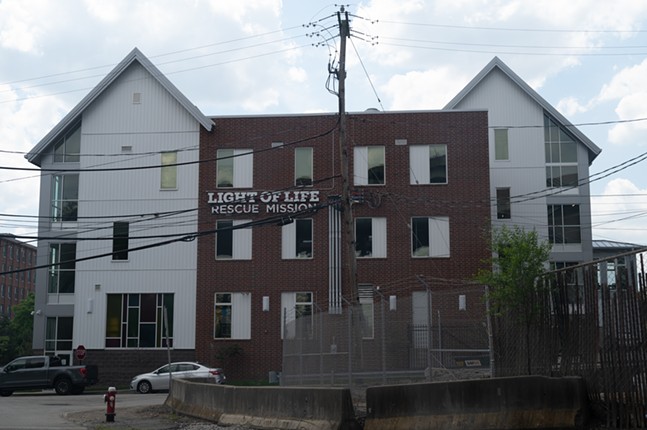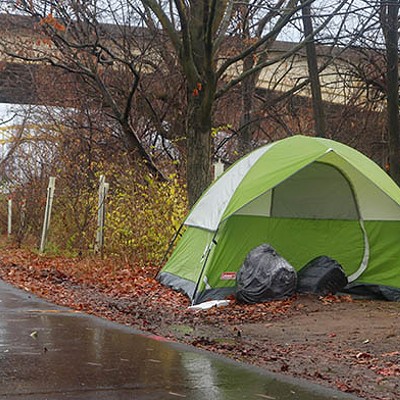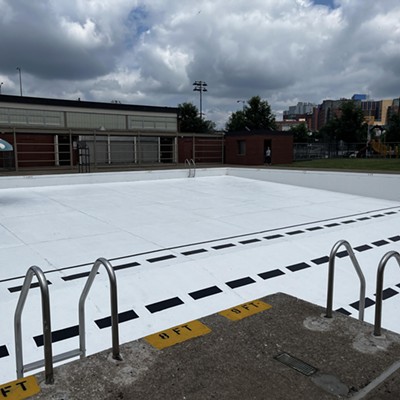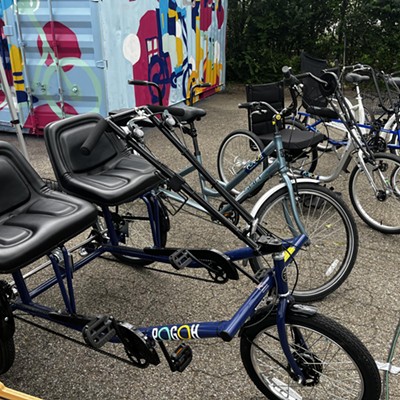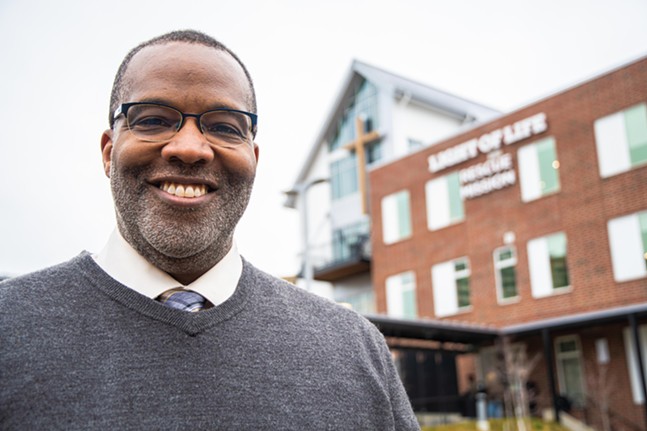
As Pittsburghers have watched homeless encampments spring up and get cleared out by authorities over the past two years, they have been faced with the reality of the affordable housing crisis. Pittsburgh City Paper sat down with Gilliam to ask him some questions about the current homeless situation in Pittsburgh and proposed solutions.
Homeless encampments are continually being moved, and then there’s outrage. How does Light of Life hope to break this cycle?
Gilliam: We're advocating for a systems change. The increase in camps is a result of a system that's not working. It’s been challenging because sometimes when we're looking at change, people or institutions can become defensive because they're translating it as if they're failing. We're not saying that, at all, but you need to be able to recognize when things are not working.
City Paper had trouble finding specific data about the unhoused population. Did we miss something?
The “Point in Time Survey” is notorious for underrepresenting the number of those experiencing homelessness and it's a national problem. I visit other cities. I sit on the board of Citygate Network, which represents over 300 rescue missions in the United States and Canada. We're all gathering information on this and it's basically universal.
We also know that there's nearly 3,000 children in Allegheny County who are considered homeless. So when you go to the county analytics website and you see numbers like 800 considered unsheltered, it grossly underestimates the problem. When you start talking about solutions, you're talking and you're looking at a couple of hundred people trying to find a couple of hundred beds, when really we're talking about thousands of people who are experiencing homelessness.
Do you think that encampments for the homeless should be legally allowed?
I think there's a better way. At Light of Life, we want to see everyone treated with dignity, respect, and value. We believe that everyone is created by God. Everyone has a divine spark in them. If a solution ends up not being something that is allowing somebody to be treated with dignity and respect, I think we need to look for a better solution.
This idea of having mothers, fathers, sisters, and brothers who are experiencing some type of crisis in their life and saying, “just live in a tent by the train tracks or by the river, with no plumbing, no running water, no electricity.” That's not a solution that we should be saying, “That's our Plan A.”
We can come up with solutions that will get people into buildings that are made for human habitation. Not a tent next to a river that can flood and there's rats that are walking up and down it.
Pittsburgh Councilmembers Deb Gross and Anthony Coghill have proposed building tiny homes to help with the homelessness issue. What are your thoughts?
The tiny home idea has been tried in cities and I’ve visited them. There are some successful models and some unsuccessful models. The key to those models that are good is that the people who go into those homes, first, they identify the right place for where they should be.
Here in Pittsburgh, I've heard ... the plan is not exactly clear on where it is they're talking about. When I went to the council meeting, they were still deciding, but they're floating some of these areas that seem to be primarily on the North Side. Some of them were around areas that were close to the river. One of the reasons why that's a horrible idea is that to put people in a flood zone is not the way we should love our neighbors.
Then building the infrastructure for plumbing and electricity in these new areas that are encampments and not currently zoned or built for habitation would require a bunch of resources, take time, and doesn't really address the issue.
We advocate for working with developers and there are many of them that have gone to the county and the city to give some examples of how they want to help.
We have a lot of empty housing stock like apartment buildings, multi-unit buildings, and hospitals that are no longer being used. Things like that can be converted fairly quickly into temporary housing. It also deals with some of the blight in the area.
Are there things your organization has been advocating for that get ignored?
Yes. There's been a systematic elimination of transitional housing beds in Allegheny County that started a few years ago as a result of HUD funding that was given priorities to counties, to COCs [Continuum of Care] that were utilizing Housing First and showing that there was a decrease in homelessness.
Any type of program moving forward really needs to re-fund transitional housing beds, mental health interventions, and supportive housing.
We need more beds, places like Resolve, systems like CRRs [Community Residential Rehabilitation]. They are transitional houses so they have access to behavioral health specialists, counselors, and it's a group home living.
Another solution we’re advocating for is incorporating funding for supportive services for housing plans.
If you are talking about building beds, and it's going to cost X number of hundreds of thousands of dollars, you also have to say how much it is going to cost to have supportive services for those utilizing those spaces for the next five years. That is essential in making sure that those housing plans are successful.
I'm hearing of landlords saying, “There's a homeless problem, I have an apartment building and I want to designate some space for the homeless to live in.” That's great but you need people who can work with them. If you just fit people in those rooms, what often ends up happening is that if they have a serious mental health diagnosis, they get worse because they're more isolated. You don't have case management, you don't have people who are helping people with taking the next steps, they'll end up actually moving backwards and not moving forward.

